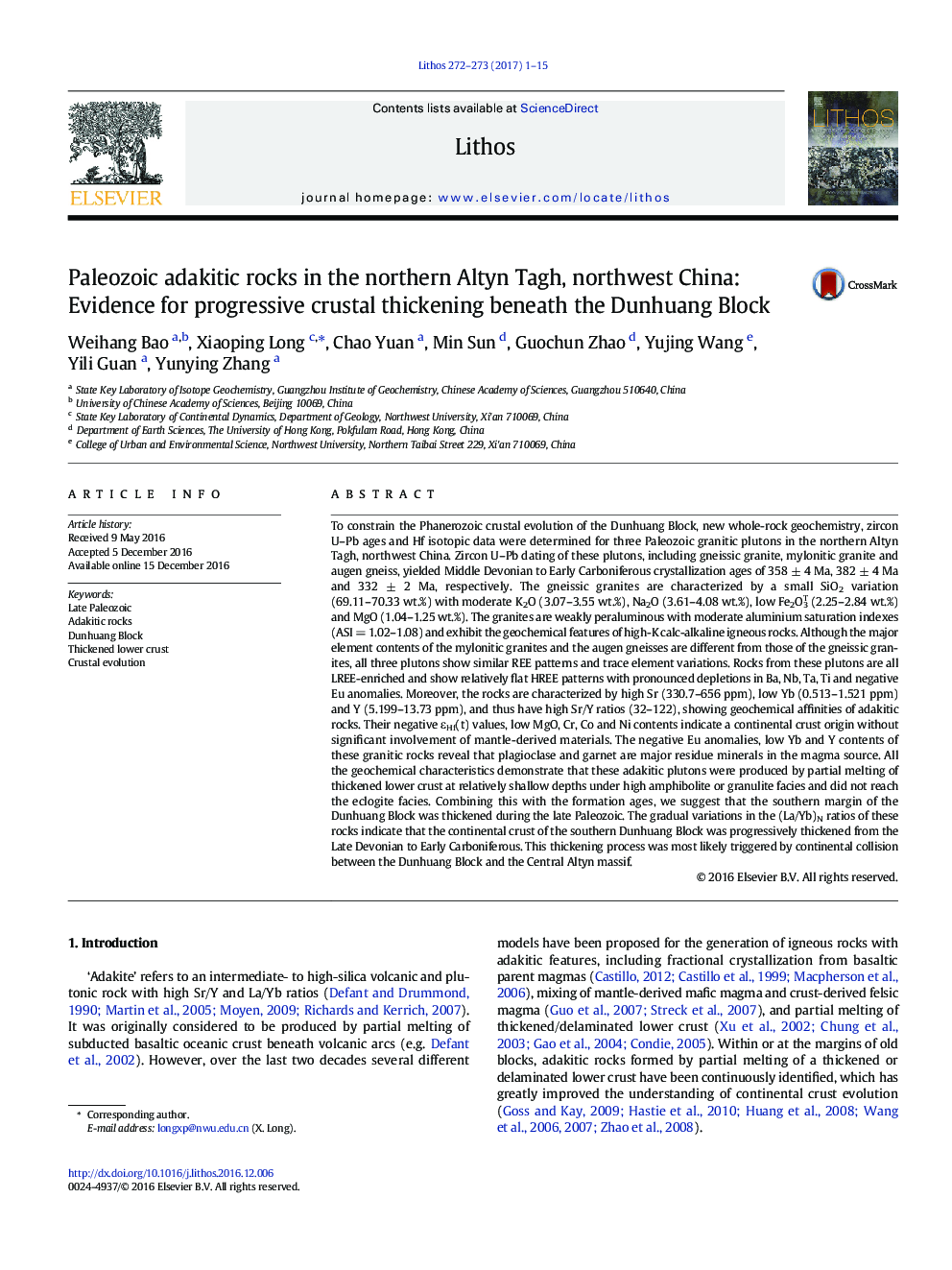| Article ID | Journal | Published Year | Pages | File Type |
|---|---|---|---|---|
| 5784191 | Lithos | 2017 | 15 Pages |
â¢Three Late Paleozoic adakitic intrusions are discovered in the Dunhuang Block.â¢The rocks were generated by partial melting of a thickened lower crus.â¢The crustal thickening started prior to the Middle Devonian and lasted more than 50 Ma.â¢The crustal thickness in the Early Carboniferous is thicker than that in the Late Devonian.
To constrain the Phanerozoic crustal evolution of the Dunhuang Block, new whole-rock geochemistry, zircon U-Pb ages and Hf isotopic data were determined for three Paleozoic granitic plutons in the northern Altyn Tagh, northwest China. Zircon U-Pb dating of these plutons, including gneissic granite, mylonitic granite and augen gneiss, yielded Middle Devonian to Early Carboniferous crystallization ages of 358 ± 4 Ma, 382 ± 4 Ma and 332 ± 2 Ma, respectively. The gneissic granites are characterized by a small SiO2 variation (69.11-70.33 wt.%) with moderate K2O (3.07-3.55 wt.%), Na2O (3.61-4.08 wt.%), low Fe2O3T (2.25-2.84 wt.%) and MgO (1.04-1.25 wt.%). The granites are weakly peraluminous with moderate aluminium saturation indexes (ASI = 1.02-1.08) and exhibit the geochemical features of high-K calc-alkaline igneous rocks. Although the major element contents of the mylonitic granites and the augen gneisses are different from those of the gneissic granites, all three plutons show similar REE patterns and trace element variations. Rocks from these plutons are all LREE-enriched and show relatively flat HREE patterns with pronounced depletions in Ba, Nb, Ta, Ti and negative Eu anomalies. Moreover, the rocks are characterized by high Sr (330.7-656 ppm), low Yb (0.513-1.521 ppm) and Y (5.199-13.73 ppm), and thus have high Sr/Y ratios (32-122), showing geochemical affinities of adakitic rocks. Their negative εHf(t) values, low MgO, Cr, Co and Ni contents indicate a continental crust origin without significant involvement of mantle-derived materials. The negative Eu anomalies, low Yb and Y contents of these granitic rocks reveal that plagioclase and garnet are major residue minerals in the magma source. All the geochemical characteristics demonstrate that these adakitic plutons were produced by partial melting of thickened lower crust at relatively shallow depths under high amphibolite or granulite facies and did not reach the eclogite facies. Combining this with the formation ages, we suggest that the southern margin of the Dunhuang Block was thickened during the late Paleozoic. The gradual variations in the (La/Yb)N ratios of these rocks indicate that the continental crust of the southern Dunhuang Block was progressively thickened from the Late Devonian to Early Carboniferous. This thickening process was most likely triggered by continental collision between the Dunhuang Block and the Central Altyn massif.
Graphical abstractDownload high-res image (254KB)Download full-size image
